|
Your search criteria found 1234 images Target is Jupiter (and available satellites) |
| My List |
Addition Date
|
Target | Mission | Instrument | Size |

|
1999-09-30 | Europa |
Galileo |
Near Infrared Mapping Spectrometer |
837x796x3 |

|
|||||

|
1999-09-27 | Jupiter |
Galileo |
Solid-State Imaging |
1200x700x1 |

|
|||||

|
1999-08-31 | Io |
Voyager |
582x720x3 | |

|
|||||

|
1999-08-31 | Io |
Voyager |
VG ISS - Narrow Angle |
619x721x3 |

|
|||||

|
1999-08-27 | Io |
Galileo |
Solid-State Imaging |
2000x1380x3 |
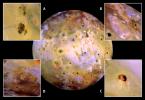
|
|||||

|
1999-08-27 | Io |
Galileo |
Solid-State Imaging |
2796x2796x3 |
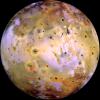
|
|||||

|
1999-08-27 | Io |
Galileo |
Solid-State Imaging |
2796x2796x3 |

|
|||||

|
1999-08-27 | Europa |
Galileo |
Solid-State Imaging |
2530x1327x3 |

|
|||||

|
1999-08-27 | Jupiter |
Galileo |
Solid-State Imaging |
2200x1200x3 |

|
|||||

|
1999-08-27 | Jupiter |
Galileo |
Solid-State Imaging |
1300x1200x3 |

|
|||||

|
1999-08-24 | Jupiter |
Hubble Space Telescope |
WFPC2 |
2401x2870x3 |

|
|||||

|
1999-08-24 | Jupiter |
Hubble Space Telescope |
WFPC2 |
321x321x3 |

|
|||||

|
1999-08-24 | Jupiter |
Hubble Space Telescope |
WFPC2 |
321x321x3 |

|
|||||

|
1999-08-24 | Jupiter |
Hubble Space Telescope |
WFPC2 |
321x321x3 |

|
|||||

|
1999-08-24 | Jupiter |
Hubble Space Telescope |
WFPC2 |
321x321x3 |

|
|||||

|
1999-08-24 | Jupiter |
Hubble Space Telescope |
WFPC2 |
321x321x3 |

|
|||||

|
1999-08-24 | Jupiter |
Hubble Space Telescope |
WFPC2 |
321x321x3 |

|
|||||

|
1999-08-24 | Jupiter |
Hubble Space Telescope |
WFPC2 |
321x321x3 |
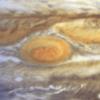
|
|||||

|
1999-08-24 | Jupiter |
Hubble Space Telescope |
WFPC2 |
321x321x3 |

|
|||||

|
1999-08-24 | Jupiter |
Hubble Space Telescope |
WFPC2 |
718x716x3 |

|
|||||

|
1999-08-13 | Io |
Voyager |
VG ISS - Narrow Angle |
790x790x1 |
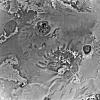
|
|||||

|
1999-07-23 | Io |
Voyager |
VG ISS - Narrow Angle |
200x130x1 |

|
|||||

|
1999-07-23 | Ganymede |
Voyager |
VG ISS - Narrow Angle |
100x100x3 |

|
|||||

|
1999-07-16 | Io |
Voyager |
VG ISS - Narrow Angle |
300x300x3 |

|
|||||

|
1999-06-22 | Jupiter |
Voyager |
1362x1228x3 | |

|
|||||

|
1999-06-16 | Ganymede |
Voyager |
VG ISS - Narrow Angle |
800x800x3 |

|
|||||

|
1999-06-16 | Io |
Voyager |
VG ISS - Narrow Angle |
600x460x3 |
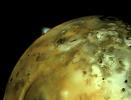
|
|||||

|
1999-06-16 | Europa |
Voyager |
VG ISS - Narrow Angle |
450x450x3 |

|
|||||

|
1999-05-21 | Io |
Hubble Space Telescope |
WFPC2 |
3000x1930x3 |
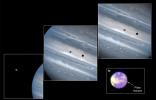
|
|||||

|
1999-05-08 | Io |
Voyager |
1517x1519x3 | |

|
|||||

|
1999-05-08 | J Rings |
Voyager |
1586x1239x3 | |

|
|||||

|
1999-04-15 | Jupiter |
Galileo |
Solid-State Imaging |
640x485x1 |

|
|
||||

|
1999-03-23 | Europa |
Voyager |
VG ISS - Narrow Angle |
790x790x1 |

|
|||||

|
1999-03-23 | Jupiter |
Voyager |
VG ISS - Narrow Angle |
862x831x3 |
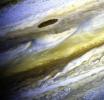
|
|||||

|
1999-03-18 | Jupiter |
Galileo |
Solid-State Imaging |
640x485x1 |

|
|
||||

|
1999-03-15 | Callisto |
Voyager |
VG ISS - Narrow Angle |
300x300x1 |

|
|||||

|
1999-03-15 | Ganymede |
Voyager |
VG ISS - Narrow Angle |
600x600x3 |
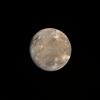
|
|||||

|
1999-03-15 | Callisto |
Voyager |
VG ISS - Narrow Angle |
300x300x3 |

|
|||||

|
1999-03-13 | Ganymede |
Voyager |
VG ISS - Narrow Angle |
780x910x3 |

|
|||||

|
1999-03-13 | Jupiter |
Voyager |
VG ISS - Narrow Angle |
937x910x3 |

|
|||||

|
1999-03-13 | Jupiter |
Voyager |
VG ISS - Narrow Angle |
487x559x3 |

|
|||||

|
1999-03-13 | Ganymede |
Voyager |
VG ISS - Narrow Angle |
860x901x3 |

|
|||||

|
1999-03-13 | Ganymede |
Voyager |
VG ISS - Narrow Angle |
875x905x3 |

|
|||||

|
1999-03-13 | Ganymede |
Voyager |
VG ISS - Narrow Angle |
830x650x3 |

|
|||||

|
1999-03-13 | Io |
Voyager |
VG ISS - Narrow Angle |
783x930x3 |

|
|||||

|
1999-03-13 | Jupiter |
Voyager |
VG ISS - Narrow Angle |
581x915x3 |

|
|||||

|
1999-03-13 | Jupiter |
Voyager |
VG ISS - Narrow Angle |
919x837x3 |

|
|||||

|
1999-03-13 | Jupiter |
Voyager |
VG ISS - Narrow Angle |
865x692x3 |

|
|||||

|
1999-03-13 | Jupiter |
Voyager |
VG ISS - Narrow Angle |
400x400x3 |

|
|||||

|
1999-03-06 | Callisto |
Voyager |
VG ISS - Narrow Angle |
600x640x3 |

|
|||||

|
1999-03-06 | Jupiter |
Voyager |
VG ISS - Narrow Angle |
915x894x3 |

|
|||||

|
1999-03-06 | Jupiter |
Voyager |
VG ISS - Narrow Angle |
916x783x3 |

|
|||||

|
1999-03-06 | Jupiter |
Voyager |
VG ISS - Narrow Angle |
1000x1000x3 |

|
|||||

|
1999-02-08 | Europa |
Voyager |
VG ISS - Narrow Angle |
864x922x1 |

|
|||||

|
1999-02-08 | Europa |
Voyager |
VG ISS - Narrow Angle |
790x790x1 |

|
|||||

|
1999-02-06 | Ganymede |
Voyager |
VG ISS - Narrow Angle |
816x870x3 |

|
|||||

|
1999-02-06 | Ganymede |
Voyager |
VG ISS - Narrow Angle |
740x730x3 |

|
|||||

|
1999-01-18 | Europa |
Galileo |
Solid-State Imaging |
1192x1636x3 |

|
|||||

|
1999-01-18 | Io |
Galileo |
Solid-State Imaging |
708x526x3 |

|
|||||

|
1999-01-18 | Io |
Galileo |
Solid-State Imaging |
800x800x3 |

|
|||||

|
1999-01-18 | Ganymede |
Galileo |
Solid-State Imaging |
687x687x3 |

|
|||||

|
1999-01-18 | Europa |
Galileo |
Solid-State Imaging |
1050x520x3 |

|
|||||

|
1999-01-18 | Europa |
Galileo |
Solid-State Imaging |
1152x696x3 |

|
|||||

|
1999-01-18 | Io |
Galileo |
Solid-State Imaging |
1152x614x1 |

|
|||||

|
1999-01-18 | Europa |
Galileo |
Solid-State Imaging |
700x540x1 |

|
|||||

|
1999-01-18 | Europa |
Galileo |
Solid-State Imaging |
988x900x1 |

|
|||||

|
1999-01-08 | Jupiter |
Voyager |
VG ISS - Narrow Angle |
400x400x3 |

|
|||||

|
1998-12-07 | Jupiter |
Galileo |
Photopolarimeter-Radiometer |
1500x2571x3 |

|
|||||

|
1998-12-07 | Europa |
Galileo |
Solid-State Imaging |
1152x626x3 |

|
|||||

|
1998-12-07 | Europa |
Galileo |
Solid-State Imaging |
2476x1988x1 |
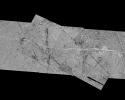
|
|||||

|
1998-12-07 | Io |
Galileo |
Solid-State Imaging |
1152x887x3 |

|
|||||

|
1998-12-07 | Jupiter |
Galileo |
Solid-State Imaging |
900x900x3 |

|
|||||

|
1998-12-07 | Callisto |
Galileo |
Solid-State Imaging |
1152x884x3 |

|
|||||

|
1998-12-07 | Callisto |
Galileo |
Solid-State Imaging |
1152x884x3 |

|
|||||

|
1998-12-07 | Europa |
Galileo |
Solid-State Imaging |
1152x507x3 |

|
|||||

|
1998-12-07 | Europa |
Galileo |
Solid-State Imaging |
1152x830x1 |

|
|||||

|
1998-12-07 | Europa |
Galileo |
Solid-State Imaging |
1231x558x3 |
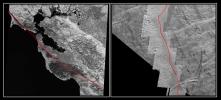
|
|||||

|
1998-12-07 | Europa |
Galileo |
Solid-State Imaging |
678x900x1 |

|
|||||

|
1998-12-07 | Europa |
Galileo |
Solid-State Imaging |
453x597x1 |

|
|||||

|
1998-12-07 | Europa |
Galileo |
Solid-State Imaging |
633x900x1 |

|
|||||

|
1998-12-05 | Jupiter |
Voyager |
VG ISS - Narrow Angle |
5489x4637x3 |

|
|||||

|
1998-12-05 | Jupiter |
Voyager |
VG ISS - Narrow Angle |
916x901x3 |

|
|||||

|
1998-12-05 | Jupiter |
Voyager |
VG ISS - Narrow Angle |
800x920x3 |

|
|||||

|
1998-12-05 | Io |
Voyager |
VG ISS - Narrow Angle |
600x600x3 |

|
|||||

|
1998-11-24 | Europa |
Galileo |
Solid-State Imaging |
1950x850x3 |

|
|||||

|
1998-11-04 | Jupiter |
Voyager |
VG ISS - Narrow Angle |
400x400x3 |

|
|||||

|
1998-11-02 | Io |
Voyager |
1573x1738x3 | |

|
|||||

|
1998-10-30 | J Rings |
Voyager |
1715x1706x1 | |

|
|||||

|
1998-10-30 | Jupiter |
Voyager |
2081x1654x3 | |

|
|||||

|
1998-10-21 | Callisto |
Galileo |
2220x1700x3 | |

|
|||||

|
1998-10-14 | Jupiter |
Galileo Hubble Space Telescope |
850x950x3 | |

|
|||||

|
1998-10-13 | Europa |
Galileo |
Solid-State Imaging |
747x800x1 |

|
|||||

|
1998-10-13 | Jupiter |
Galileo |
Solid-State Imaging |
592x537x3 |
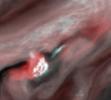
|
|||||

|
1998-10-13 | Jupiter |
Galileo |
Solid-State Imaging |
1152x855x1 |

|
|||||

|
1998-10-13 | Io |
Galileo |
Solid-State Imaging |
689x350x3 |

|
|||||

|
1998-10-13 | Jupiter |
Galileo |
Solid-State Imaging |
880x620x3 |

|
|||||

|
1998-10-13 | Io |
Galileo |
Solid-State Imaging |
1054x352x3 |

|
|||||

|
1998-10-13 | Callisto |
Galileo |
Solid-State Imaging |
6490x13101x1 |

|
|||||

|
1998-10-13 | Europa |
Galileo |
Solid-State Imaging |
2686x2494x1 |

|
|||||

|
1998-10-13 | Callisto |
Galileo |
Solid-State Imaging |
720x703x1 |

|
|||||

|
 |
 |
 |
 |
 |
 |
 |
 |
 |
 |

|
| 1-100 | 101-200 | 201-300 | 301-400 | 401-500 | 501-600 | 601-700 | 701-800 | 801-900 | 901-1000 |
| Currently displaying images: 701 - 800 of 1234 |